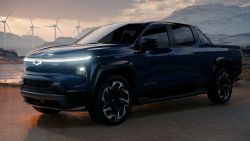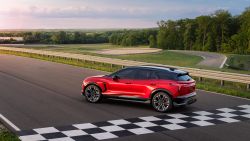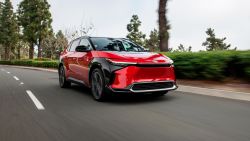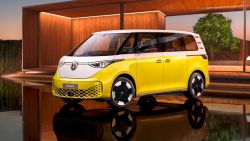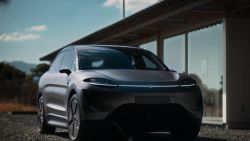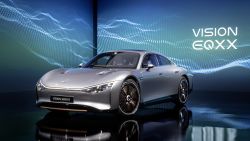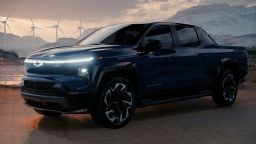Time could be running out for the Chevrolet Bolt, the electric vehicle that only five years ago was positioned as General Motors’ best chance to overtake Tesla.
On Tuesday, GM announced a $35 billion investment in EVs by 2025, including $4 billion to build electric versions of its best-selling pickups, the Chevy Silverado and GMC Sierra.
GM plans to build those electric pickups by 2024 is its plant in Orion Township, Michigan. The plant is now the home for the Bolt and the slightly larger Bolt EUV. And no new location for the Bolt was included in Tuesday’s announcement.
“Production of the Chevrolet Bolt EV and EUV will continue during the plant’s conversion activities to prepare the facility for production of the Silverado EV and Sierra EV pickups,” said GM spokesperson Dan Flores. “We are not disclosing any additional information at this time about Bolt EV or Bolt EUV production.”
Bolt production already halted
Although GM (GM) said it will continue the Bolt’s production, the truth is that it hasn’t built a new Bolt since mid-November, and has barely built any since late August, selling only 25 in the United States during the last three months of 2021.
The problem is a recall of virtually all existing Bolts due to the risk of fire when the cars are parked and recharging, which will require new batteries for 143,000 recalled Bolts. That has left GM without the batteries needed to build new Bolts.
“Orion is currently down through February, so we can continue focusing LG battery pack production on recall repairs,” said Flores. Last month, GM was only planning to keep production down through January. As to when production may finally resume, Flores said, “GM has not yet made a decision beyond February.”
Once a breakthrough car
The Bolt was the first pure electric vehicle offered by GM since it sold a limited-production Chevy EV1 in California in 1996. It debuted to good reviews in late 2016, including winning Green Car of the Year and Motor Trend Car of the Year honors.
It was essentially the only EV that GM sold in North American until this month when the GMC Hummer EV pickup went on sale. GM sold only one of those pickups before closing the books on 2021.
GM aims to convert half of its North American assembly capacity to EV production by 2030, and shift to offering only EVs by 2035. The company has a number of other electric vehicles scheduled to hit US dealerships within the next year, including the GMC Hummer pickup and the Cadillac Lyriq, due to start production in the first quarter of 2022.
Those new vehicles — and all GM’s EVs going forward — have a different battery from the Bolt, dubbed Ultium, which promises superior performance. On Tuesday, GM and LG Energy Solutions also announced plans for a $2.6 billion battery plant in Lansing, Michigan, not far from Orion Township. But that will make it difficult for GM to sell Bolts with an inferior battery, even if the fire problem is fixed.
And the Bolt is tiny — even the slightly larger Bolt EUV is a little more than 14 feet, or 170 inches, long. While that’s a few inches longer than the original, it’s about a foot shorter than a compact Toyota Corolla, even if it has somewhat more interior space and cargo capacity because it lacks an engine.
Other GM EVs cost far more
Its next generation of EVs are aimed at a wealthier demographic. The Hummer EVs have a starting price of between $80,000 and $110,000, while the Lyriq starts at $59,000. Pricing for the Silverado EV has yet to be announced but it will probably be in that range.
And GM is facing more competition for the lower priced Bolt. Ford (F) is tripling its own output of its electric Mustang Mach E SUV to meet strong demand.
It helps GM to have a lower-priced EV to go with the higher-priced models it will soon be selling, especially with rivals such as Ford (F), Volkswagen (VLKAF) and Tesla (TSLA) offering EVs for less than a $45,000 starting price.
But the Bolt has a pricing disadvantage when competing with Ford and Volkswagen, as those companies’ EVs come with a $7,500 federal tax credit for buyers. GM’s hopes of getting that tax credit back for its EVs appears to have died with the apparent failure of the Biden administration’s Build Back Better legislation.
The Bolt was originally positioned as the first mass-market car from any automaker, rather than a luxury car, capable of going more than 200 miles on a single charge.
GM characterized customer reaction for the Bolt as good. The company said it had better than 90% customer satisfaction in early 2021 — albeit before the recall. Since then, GM had to repurchase some Bolts from customers who were concerned that the vehicles would catch fire and who didn’t have a safe place to park them.
The Bolt also had the highest “conquest rate” of any Chevrolet car, with about 70% of the Bolt buyers switching to GM from other automakers. And GM recently redesigned the Bolt, introducing the slightly larger Bolt EUV, indicating that it plans to keep the car in its lineup for five or more years.
Those plans now seem unlikely.


